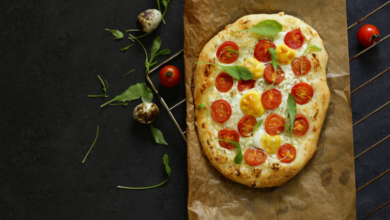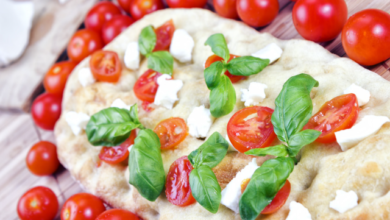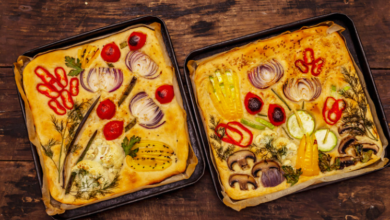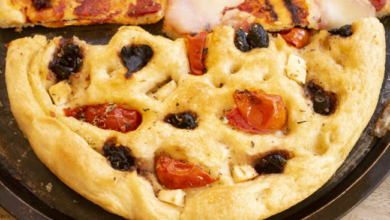What to Know About Focaccia Bread – Is This Italian?
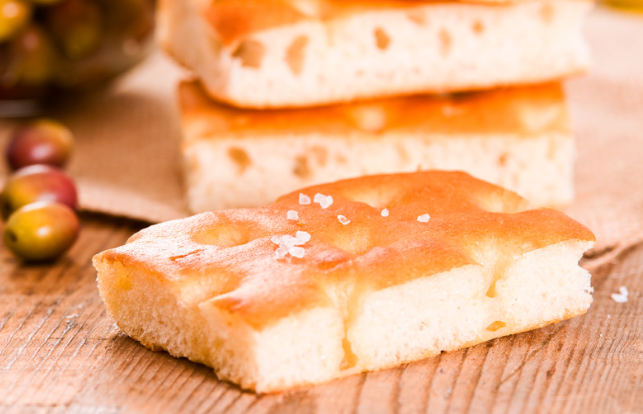
What To Know
- It is often topped with herbs such as rosemary, thyme, or sage, and is a popular accompaniment to soups and stews.
- It is often topped with tomatoes, onions, and olives, creating a flavorful and hearty bread that can be enjoyed on its own or as a sandwich.
- Whether you enjoy it as an appetizer, a side dish, or a main course, focaccia is sure to delight your taste buds and transport you to the heart of Italian cuisine.
The answer to the question “Is focaccia bread Italian?” is an emphatic yes! Focaccia, a beloved flatbread with a tender crumb and a crispy crust, has deep roots in the culinary traditions of Italy. Its history, ingredients, and preparation methods have been passed down through generations, making it an integral part of Italian cuisine.
The Origins of Focaccia
The origins of focaccia can be traced back to ancient Rome, where it was known as “panis focacius.” This flatbread was a staple food for Roman soldiers and civilians alike, providing sustenance and nourishment. Over time, focaccia spread throughout Italy, becoming a popular street food and a versatile addition to meals.
Regional Variations of Focaccia
Focaccia is not just one bread but a diverse family of regional variations. Each region of Italy has its own unique take on this classic flatbread, resulting in a wide array of flavors and textures.
Ligurian Focaccia
Ligurian focaccia, originating from the northwestern region of Liguria, is characterized by its thin, crispy crust and generous topping of olive oil, salt, and rosemary. It is often served as an appetizer or a side dish to accompany grilled meats or seafood.
Tuscan Focaccia
Tuscan focaccia, from the central region of Tuscany, is known for its thicker, chewier crust and a more subdued flavor profile. It is often topped with herbs such as rosemary, thyme, or sage, and is a popular accompaniment to soups and stews.
Pugliese Focaccia
Pugliese focaccia, hailing from the southern region of Puglia, is distinguished by its large, rectangular shape and a thick, airy crumb. It is often topped with tomatoes, onions, and olives, creating a flavorful and hearty bread that can be enjoyed on its own or as a sandwich.
Ingredients and Preparation
Traditional focaccia bread is made with a simple dough of flour, water, yeast, salt, and olive oil. The dough is kneaded and left to rise, then stretched into a thin sheet and topped with various ingredients. The most common toppings include olive oil, salt, rosemary, and herbs.
Baking Focaccia
Focaccia is typically baked in a hot oven on a baking stone or pizza stone. The high heat creates a crispy crust while the moist dough remains tender and flavorful. The baking time varies depending on the thickness of the focaccia, but it is generally baked for 15-25 minutes.
Culinary Uses of Focaccia
Focaccia is a versatile bread that can be enjoyed in a variety of ways. It can be served as an appetizer, a side dish, or a main course. It is also a popular choice for sandwiches, pizzas, and bruschetta.
Appetizer
Focaccia makes an excellent appetizer when topped with cheese, meats, or vegetables. It can be cut into small squares or wedges and served with dips or spreads.
Side Dish
Focaccia can be served as a side dish to accompany grilled meats, seafood, soups, and stews. Its hearty texture and flavorful crust complement a wide range of dishes.
Main Course
Focaccia can be transformed into a main course by adding toppings that make it a complete meal. Popular toppings include roasted vegetables, grilled meats, and fresh herbs.
Sandwiches
Focaccia is an ideal bread for sandwiches due to its sturdy crust and tender crumb. It can be filled with a variety of meats, cheeses, vegetables, and sauces.
Pizzas
Focaccia can be used as a base for pizzas, creating a flavorful and crispy alternative to traditional pizza dough. It can be topped with your favorite pizza ingredients, such as tomato sauce, cheese, and toppings.
Bruschetta
Focaccia is a delicious base for bruschetta, a classic Italian appetizer. It is topped with a variety of toppings, such as tomatoes, garlic, basil, and olive oil, and grilled until golden brown.
In a nutshell: The Enduring Legacy of Focaccia
Focaccia bread is a testament to the rich culinary heritage of Italy. Its simplicity, versatility, and delicious flavor have made it a beloved food throughout the country and beyond. Whether you enjoy it as an appetizer, a side dish, or a main course, focaccia is sure to delight your taste buds and transport you to the heart of Italian cuisine.
Basics You Wanted To Know
Q: Is focaccia bread the same as pizza dough?
A: No, focaccia bread is not the same as pizza dough. Focaccia dough is typically thicker and denser than pizza dough, and it is baked at a lower temperature.
Q: What is the best way to store focaccia bread?
A: Focaccia bread can be stored at room temperature for up to 3 days. For longer storage, it can be frozen for up to 2 months.
Q: Can I make focaccia bread without yeast?
A: Yes, you can make focaccia bread without yeast. However, the bread will not be as fluffy and airy as focaccia made with yeast.
Q: What is the difference between focaccia and ciabatta?
A: Focaccia and ciabatta are both Italian flatbreads, but they have different textures and appearances. Focaccia is typically thinner and crispier than ciabatta, and it has a dimpled surface. Ciabatta is thicker and chewier, and it has a more open crumb structure.
Q: Can I use focaccia bread to make sandwiches?
A: Yes, focaccia bread can be used to make sandwiches. It is a sturdy and flavorful bread that can hold up to a variety of fillings.
